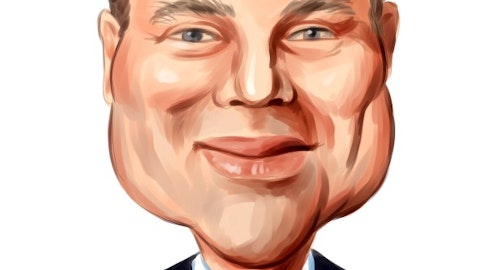![]() Long ago, an economist supposedly said, “When the U.S. sneezes, the whole world catches a cold.” This statement has been interpreted to mean that a slowdown in the U.S. economy could lead to a global recession since so many countries depend on the United States as an export market for their production.
Long ago, an economist supposedly said, “When the U.S. sneezes, the whole world catches a cold.” This statement has been interpreted to mean that a slowdown in the U.S. economy could lead to a global recession since so many countries depend on the United States as an export market for their production.
Research shows that the statement might actually date back to the 19th century when a diplomat said, “When France has a cold, all Europe sneezes.” At the time of Napoleon, France was an important center of global trade and economies were interconnected to some degree.
Like many old sayings, the exact source and the exact wording are less important than the meaning behind the idea. In this case, we can see that the economies and stock markets of individual nations have long been dependent on growth in other countries.
A chart published by researchers at the Centre de Recerca en Economia Internacional (CREI) shows that the correlation between international stock markets has been steadily rising since the 1980s, making this relationship more important for investors to consider now than potentially at any point in history.

Studying correlations between markets shows that stocks around the world have an especially strong tendency to move down together. In bull markets, correlations are lower but still significant. In other words, correlations have increased sharply in recent years, but they are even stronger when markets sell off.
The tendency of markets to fall in unison raises troubling questions now. There are signs of increasing financial stress in India and other nations. India has imposed currency controls, a sign that the government is concerned about capital fleeing the country. Cyprus imposed currency controls earlier this year as its economy collapsed in a banking crisis.
India’s actions come at a time when emerging market stocks are already in bear market territory. iShares MSCI Emerging Markets Indx (ETF) (NYSEARCA:EEM) has been recovering from its June lows after falling 20% from the beginning of the year, but the trend is still down.
Developed economies around the world have generally been moving higher this year, but iShares MSCI EAFE Index Fund (ETF) (NYSEARCA:EFA), an ETF that tracks developed market stocks in Europe, Australia, Asia and the Far East, shows a gain of only about 8% year to date, significantly less than the nearly 16% gain of SPDR S&P 500 ETF Trust (NYSEARCA:SPY). This is to say that during the past six months, iShares MSCI Emerging Markets Indx (ETF) (NYSEARCA:EEM) and iShares MSCI EAFE Index Fund (ETF) (NYSEARCA:EFA) have sharply diverged from SPDR S&P 500 ETF Trust (NYSEARCA:SPY).

Eventually, these three ETFs are likely to get back in synch. If iShares MSCI Emerging Markets Indx (ETF) (NYSEARCA:EEM) is leading the way, SPDR S&P 500 ETF Trust (NYSEARCA:SPY) should decline. Of course, if the U.S. stock market is the leader, EEM should provide a large gain to traders. But it seems unlikely that emerging markets can join the U.S. in a bull market with consistently bad economic news coming from several emerging markets.
The next chart shows that in order for global stock markets to get back in synch, the odds favor a decline in U.S. stocks.

The correlation between iShares MSCI Emerging Markets Indx (ETF) (NYSEARCA:EEM) and SPDR S&P 500 ETF Trust (NYSEARCA:SPY) is at an all-time low. Correlations tend to be mean reverting, and the correlation should increase at some point. Traders like to say “all correlations go to 1 in a bear market,” meaning that correlations rise when markets fall. For this to happen, we should expect to see a decline in both EEM and SPY.





